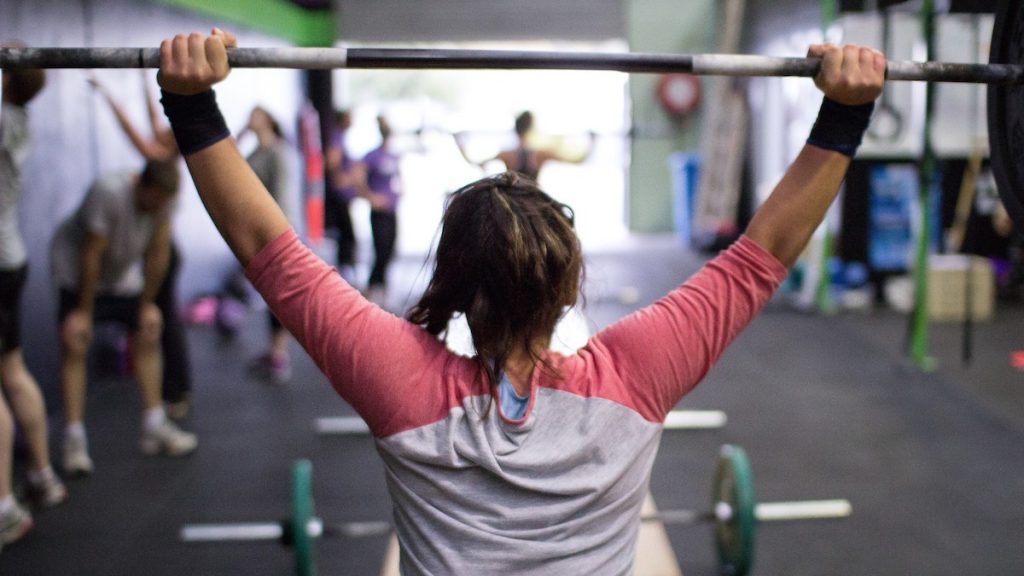
How Strength Training Keeps Your Bones Healthy And Strong
Do you want stronger, leaner, healthier bones? You can achieve this by exercising and eating a healthy diet. When it comes to exercise, strength training can help you get stronger and look and feel better, as well as help you build and maintain muscle mass and strength. And strong muscles lead to strong bones. This is important considering that after age 30, you begin to lose both muscle mass and bone mass.
What’s more, strength training can increase your endurance, make everyday activities easier, help you build speed, and improve your reaction time. This is vital as you age because it can help prevent falls and broken bones from osteoporosis.
Osteoporosis In Old Age
As you get older, your bones become more fragile and susceptible to fracture due to osteoporosis, which is a condition that causes bones to become weak and brittle. But it’s not just the process of growing old that leads to reduced bone mass at a rate of 1% per year after age 40, it’s also due to a combination of inactivity and inadequate nutrition.

When you have osteoporosis, your bones can break after a minor fall or even when bending over to tie a shoelace. This is what medical professionals call a ‘fracture’, and it’s either a partial or complete break in a bone. Osteoporosis is responsible for hundreds of thousands of fractures each year, with experts expecting that number to rise. Hip fractures are generally the most serious – six out of 10 people who break a hip don’t regain their former level of independence. For example, they need help to simply walk across a room, get out of a chair, or climb stairs.
According to the medical director of ‘Osteoporosis Australia’ Professor Peter Ebeling, more than 80% of seniors over 70 have osteoporosis or osteopenia (low bone mineral density indicating high risk for osteoporosis). So, if you’re over the age of 40 or you’ve broken a bone from an incident like falling or tripping, you should get diagnosed with osteoporosis. This way, you can receive investigations or treatments to prevent getting fractures or the next break.
You can also check your bone health by taking the online self-assessment developed by Osteoporosis Australia and the Garvan Institute of Medical Research at Know Your Bones bone health assessment tool. You’ll get an individual report that determines your risk of breaking a bone, and if your results are in the amber or red zone, you’ll need to see your doctor.
Strength Training For Stronger Bones
Strength training (aka weight training or resistance training) provides many health benefits, such as strong muscles, weight loss, joint flexibility, and improved heart health, balance, and mental well-being. What’s more, many studies show that strength training can slow bone loss, as well as build bone. And strong bones can help offset age-related declines in bone mass and reduce the risk of fracture due to osteoporosis.
Strength training activities that put stress on bones, such as those that tug and push on bone, nudge bone-forming cells into action, resulting in stronger, denser bones. The workouts involve using free weights like barbells, dumbbells and kettlebells, weight machines, resistance bands and tubes, medicine balls, or no equipment at all. They target and strengthen bones that are most likely to fracture, such as your hips, spine, and wrists.

Resistance training exercises that use your body include abdominal crunches, lunges, push-ups, squats, and step exercises. Resistance bands and tubes are used with exercises such as arm curls, kicks, and squats. You can even add some strength and try dumbbell curls, an exercise favored by baseball players working their arm strength. Additionally, resistance workouts with moves that emphasize power and balance to improve strength and stability. This can help reduce fractures by building coordination and cutting down on falls.
Before you start strength training, speak with your doctor and fitness professional about the right way to do each exercise. It’s important to start slowly, and as the exercises become easier, gradually increase the weight or resistance. It’s recommended that you do strength training at least twice a week with each session lasting for approximately 20 to 30 minutes.
If you want even stronger bones, you should combine strength training with other ways of promoting good bone health. For example, eat calcium-rich foods every day, get some sunshine for Vitamin D (this is also essential for absorbing calcium from your diet) or take supplements, and do weight-bearing aerobic exercises like walking or running.
Fight Osteoporosis With Strength Training
As you can see, strength training can help protect your bones and prevent osteoporosis-related fractures. So, if you’re over 40 years of age and feeling weak and tired due to your body losing muscle mass and bone mass, you can regain them both as well as your strength and energy by lifting weights or doing resistance training exercises.
Now that you know the benefits of strength training on your bone health and the importance of staying fit and healthy as you age, get off the couch and start moving.
Strength Training FAQs
How Does Strength Training Strengthen Bones?
Activities that put stress on bones can nudge bone-forming cells into action. That stress comes from the tugging and pushing on the bone that occurs during strength training (as well as weight-bearing aerobic exercises like walking or running). The result is stronger, denser bones.
Does Exercise Keep Your Bones Strong?
Vital at every age for healthy bones, exercise is important for treating and preventing osteoporosis. Not only can exercise improve your bone health, but it can also increase muscle strength, coordination, and balance, and lead to better overall health.
How Does Strength Training Build Muscle?
Resistance training increases muscle strength by making your muscles work against a weight or force. Different forms of resistance training include using free weights, weight machines, resistance bands, and your own body weight. A beginner needs to train two or three times per week to gain the maximum benefit.
How Does Strength Training Exercises Improve The Muscles?
Strength training helps improve the strength, range of motion, and mobility of your muscles, ligaments, and tendons. This can reinforce strength around major joints like your knees, hips, and ankles to provide additional protection against injury.
Should You Do Strength Training Everyday?
Aim for two to three days per week of strength training. Include full-body workouts that focus on compound exercises. These are moves that work multiple muscles at a time.
